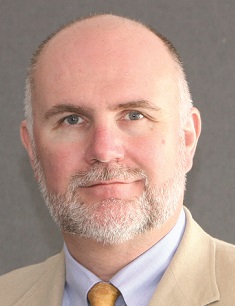Feature / The way ahead
Sustainability and transformation plans have had a rough ride so far, and the public views them with suspicion. Seamus Ward takes a closer look at what they propose
Stories of secret NHS plans to shut down hospitals; local councillors leaking plans they disagreed with; and, when finally published, the public complaining that the wording of their local sustainability and transformation plan (STP) was gobbledygook. It’s been a tough time for STPs and it will probably only get harder as NHS leaders consult with the public, implement their plans and try to realise the clinical and financial benefits.
Setting aside the opposition and fear, however, what are the emerging themes from STPs? As you would expect, the high-level messages are of collaboration, improving health and social care experiences and outcomes, tackling inequality and delivering financially sustainable services.
Their system-wide, partnership approach has given many commentators hope they will be able to tackle the tough issues facing the NHS. In December’s NHS financial temperature check, the HFMA asked finance directors for their initial views on STPs. Their responses showed that they believed STPs had led to valuable strategic discussions and that there was a general acceptan
ce of the worth of the process, particularly regarding deficit reduction. But there were concerns about governance arrangements.

The King’s Fund believes STPs offer the best hope of securing a sustainable NHS. Senior policy adviser Helen McKenna says: ‘We welcome the broad direction set out in the STPs in terms of how they seek to progress and implement the vision in the Five-year forward view. We support the ambition to reduce the dependency on hospitals and to provide more care in the community, as well as the place-based approach that STPs are taking, with organisations coming together to tackle problems.’
Care networks
The fund published a report on STPs in February, and found consistent themes. ‘Broadly, [STPs] want to deliver more services in the community, by, for example, putting GPs at the heart of networks, with some seeking to bring together primary care, community services and social care. A lot of the plans place a greater emphasis on prevention, tackling unhealthy behaviours and promoting mental health and wellbeing.’
For example, Lancashire and South Cumbria proposes shifting more care out of hospital to a beefed up primary and community care sector (see below).
Measures to take forward the Carter agenda are evident in all plans, as STPs seek to improve productivity and efficiency, and close their local funding gap. Ms McKenna adds that some STPs propose a reduction in the number of hospitals in their area, cutting the number of hospital beds or centralising services on a single hospital site.
For example, North West London’s STP includes a proposal that has been under development for several years to reduce the number of major hospitals from nine to five. Two local authorities oppose the proposal.
Meanwhile, Nottingham and Nottinghamshire proposes to cut more than 200 beds through more timely patient discharge, while the Derbyshire STP estimates the area will need 400 fewer beds by 2020/21 following the redesign of care delivery.
The Cambridgeshire and Peterborough plan proposes that a number of services be considered for centralisation, including orthopaedics, stroke, maternity and paediatrics. The proposals for stroke services would lead to all stroke and neurological rehabilitation care being delivered on a single site instead of being spread across a number of sites, though the two hyperacute stroke units in the area would be retained.
The STP expects the move to improve the quality of services provided to patients and deliver efficiencies.
Ms McKenna says a number of STPs have a focus on the workforce and the impact of shortages of staff on care. ‘Lots are trying to be innovative when trying to solve the problem – for example, through proposing the use of physician associates or care navigators to support plans to shift care out of hospital.’
Some are looking at using the new apprenticeship levy. Devon’s STP suggests creating new roles such as care apprentices and exploring more flexible career pathways that will allow staff to rotate between local organisations.

finance officer of the Lancashire and South Cumbria (L&SC) STP, says its STP is not so much a plan as an indication of a potential future, especially since the precise nature of changes has yet to be consulted on and agreed locally.
‘I think calling our STP a “plan” at this stage gives the wrong impression to the public. We have a shape for something that delivers what we need – meeting FT/trust control totals and CCG business rules. But our actual plans are being developed and will be subject to further debate and consultation.
‘I think STPs have to be clear about the status of their plans. In areas such as Greater Manchester, a lot of work had been done prior to the requirement to submit an STP and they were probably able to call it a plan.
‘Other STPs may not have been in a position to develop a coherent plan in time for submission and yet others may have been in the middle of formulating system-wide plans, but may not have had them completed. I think L&SC falls into the latter category.’
Nevertheless, a document has been submitted to the national oversight bodies. ‘The broad shape of our STP is that we are not looking to substantially downsize our acute trusts. We are looking to hold demand to the levels we have this year (2016/17) and stop
the growth in acute care. We think the only way to achieve that is to take a radically different approach to the way out-of-hospital services are organised.’
The STP area has a do-nothing gap of £572m across health and social care on a turnover of £3.7bn. Over the next four years, local health commissioners will be receiving an additional £345m – growth of 11.3% over the period.
‘The reason we have a problem is partly because some of the organisations already have financial problems, but mainly because the growth in costs is higher than the growth in allocations and income,’ says Mr Raphael.
It has proved difficult to get the message through to the public that the STP is trying to avoid costs rather than planning to take £572m out of existing budgets.
‘We are looking to stop the cost increase to commissioners in acute care and invest our growth money in primary, community and mental health services,’ he says.
Where service change is proposed, convincing the public will be difficult, Ms McKenna says. The perceived secrecy around STPs has made the public and local politicians wary. ‘Proposals must be sufficiently stress tested, but where the evidence does mean reducing a service is the right proposal, how do STPs communicate that to the public and local politicians? STPs face immense challenges in winning support.’
Some proposals are driven by the need for clinical sustainability. ‘I think each of these proposals has to be considered on its own merits, but it appears that some of the proposals will be right for the reasons of clinical quality because there simply isn’t the workforce to sustain high-quality services at a number of sites,’ she says. ‘Where they are evidence based and credible, these proposals need to be supported.’
The report argues that bed cuts are not credible unless investment is first made in community services. Ms McKenna says this includes making the most of existing community services by greater integration of out-of-hospital services. 
Community model
Expanded primary and community care represents the flip side to changes in secondary delivery. One potential model for enhanced primary and community care is emerging from Lancashire – the Fylde Coast multispecialty community provider vanguard. Its care model, known as extensive care, focuses on the over-60s with two or more long-term conditions, supporting them to stay out of hospital. It looks at those who use services most and applies risk stratification to predict when a patient’s condition could be about to decline and require hospital admission.
All health and social services are wrapped around the patients, so services they may have received in hospital previously, such as a diabetes or COPD programme, are delivered in the community.
‘The assessment was that the top 2%-3% of [all] patients were consuming nearly 50% of acute resources, so by wrapping this service around them you can start to avoid hospital admissions and do things more effectively for them,’ says Mr Raphael.
‘We aim to improve their health and enable them to better manage their long-term conditions by working with them and their families to develop services that meet their needs and ensure they comply with their treatment regimes, which are often very complicated.
‘The vanguard is moving away from a reactive process to using predictive analysis – having daily reports on the status of individuals means you can predict what’s going to happen.’
Changes to funding flows were relatively uncomplicated, as the vanguard includes an acute, community and mental health provider (Blackpool Teaching Hospitals NHS Foundation Trust).
‘We were able to say to the trust that this is a shift from one of your services to another, though there was an element of pump-priming to assist the trust in that shift,’ says Mr Raphael.
He says the initial modelling suggested the savings made on hospital care would be similar to the amount needed to fund the services in the community.
However, diverting funds to establish the extensive care sites meant the building blocks were in place to take a neighbourhood approach to improving primary and community services for patients with one or more conditions. ‘That is where you start making inroads into the overall spend on our patients,’ he says.
The vanguard is currently examining its results, but Mr Raphael says initial work indicates that savings are being made – though perhaps not where the modelling originally suggested. Once the results have been confirmed, the scheme will be considered for roll-out across the STP area.
A small number of STPs wish to move to accountable care systems (ACS), including Devon and Coventry and Warwickshire. The latter’s STP lead, Andy Hardy, says that the ACS would break down organisational boundaries. ‘We know that care is inefficient and less effective at the touch points between organisations,’ he says. ‘This is how we can provide a better offering to our population.’
He says the STP deliberately chose the name ACS rather than an accountable care organisation. ‘By its very nature, ACO implies one organisation and you need mergers and takeovers to get there, which take time and resources and could prove to be a distraction.’
He adds that the bad publicity over STPs in general has galvanised local partners to get around the table. ‘We are having those difficult conversations that we knew were needed but weren’t taking place.’
Capital funding
Capital funding will be required to ensure that buildings meet the requirements of reconfigured services. Research by the British Medical Association (see box, page 17) shows capital requirements varying from £20m to £800m. However, last December NHS Improvement chief executive Jim Mackey said the capital proposals in STPs outstripped the amounts available.
Many STPs acknowledge the shortage of capital. Staffordshire and Stoke STP says that ‘given the constrained capital environment, we have limited our capital requirements to £20m. This is to fund two £10m schemes over 2017/18 and 2018/19’.
It adds that, although small in value, the schemes should deliver £19.5m in savings.
Mr Hardy says Coventry and Warwickshire’s relatively small bid of £36.5m was a recognition of the lack of available capital and the fact that its current estate is largely in good condition, with a number of capital schemes in train. It has bid for national funding as its primary source of capital, but will look elsewhere if this falls short of its needs. For example, it has proposed that capital receipts should be retained, which would require a change in policy at national level.
‘We have talked about keeping the receipts within the Coventry and Warwickshire health economy, rather than potentially losing them to a central pot at the Department of Health or the West Midlands Combined Authority.
‘We are not talking about large amounts, but we could use it for transformation, reinvest it or use to cover double-running costs,’ he adds.
With the Lancashire and South Cumbria STP potentially moving services out of hospital and consolidating some hospital specialties, capital funding will be required.
According to the STP, a total of £264m could be needed – £100m for development of the primary care estate and £164m for a combination of existing trust capital bids and the consolidation of any fragile specialties across existing hospital sites, should this be required.
Mr Raphael says the figure is a combination of the estates element of local CCG bids for the estates, technology and transformation fund and what trusts told him would be needed to facilitate consolidation.
He insists nothing is set in stone, though the overall figure is close to the area’s fair share of the national capital allocation.
The STP is working with local authorities. Although they have their own financial issues, low interest rates mean they do have access to reasonably low-cost loans. 
Collaborative bid
It is also bidding for funding under the One public estate capital scheme. Local authorities and the STP believe they could benefit from this – funding collaborative work to help councils rationalise their estate and the NHS to expand community and primary care sites.
STPs must engage meaningfully with local authorities, staff, patients, the public and the third sector, says the King’s Find’s Ms McKenna. National bodies must ‘stand shoulder to shoulder’ with the NHS and local authorities and ensure their messages are consistent.
‘The big question for us is whether the direction set by STPs can be delivered at the scale and pace they have been asked to do it and at a time when hospitals are so stretched and financial resources are in such short supply. STPs must be given a more realistic timescale for implementation.’
Sustainability and transformation plans point the way forward, but with public consultation yet to take place, the nature and pace of change is far from determined.
Capital question
There is not enough capital funding
available to support STP plans, according to the British Medical Association.

The BMA contacted all 44 STPs, and 36 responded, with their total projected capital requirements coming to £9.5bn.
According to the figures obtained by the BMA from freedom of information requests, three-quarters of STPs believe they will need £100m or more, while six said they will require more than £500m.
The Cambridgeshire and Peterborough STP has the highest potential requirement (£800m), though it claims the funding – spread over the period until 2021 – is almost entirely for business-as-usual investments and not in support of consolidating hospital capacity.
The second highest – Cheshire and Merseyside STP (up to £755m) – recognised in its plan that capital funding is limited and some schemes may not be approved. It adds that it will need to focus investment on schemes that provide the greatest benefit.
In England, capital funding has been set at £4.8bn a year, up to 2020/21. However, the BMA points out that in the past financial year, £1.2bn was transferred to revenue to reduce the deficit.
Senior Department of Health figures have acknowledged that this is undesirable but likely to continue.
Factoring in estates returns, published by NHS Digital last October, which showed that around £2bn would be needed to eradicate a high and significant maintenance backlog risk, the BMA claimed the capital available would be closer to £1.6bn.
BMA chair Mark Porter (top, right) said: ‘The NHS is at breaking point and the STP process could have offered a chance to deal with some of the problems that the NHS is facing, like unnecessary competition, expensive fragmentation and buildings and equipment often unfit for purpose. There is clearly nowhere near the funding required to carry out these plans.’
However, calculating available capital is not as simple as subtracting the potential capital to revenue transfer and the cost of urgent backlog maintenance from the total capital allowance.
The NHS does not fully address its backlog maintenance. In some cases it would be wasteful to do so – backlog maintenance can be in old buildings that are due to be demolished or replaced, for example.
And the NHS does not eradicate its significant or high-risk backlog each year – according to the NHS Digital returns, it spent just over £350m in 2015/16, with similar amounts in previous years.
The STP total capital requirement will be spread over a number of years. While capital requirements may well be greater than funding, the amount of capital available could be higher than the BMA believes.
Related content
We are excited to bring you a fun packed Eastern Branch Conference in 2025 over three days.
This event is for those that will benefit from an overview of costing in the NHS or those new to costing and will cover why we cost and the processes.